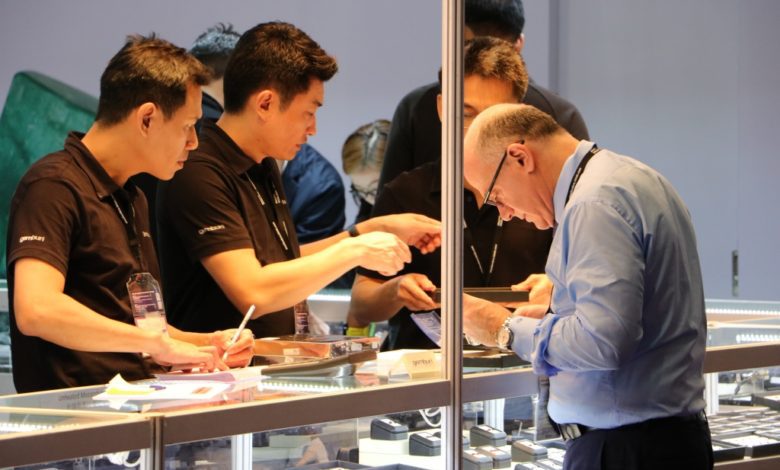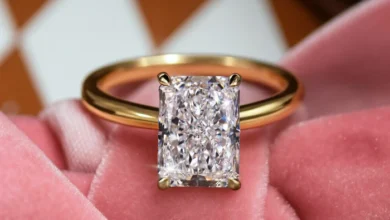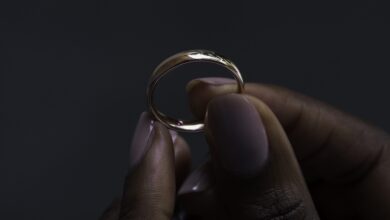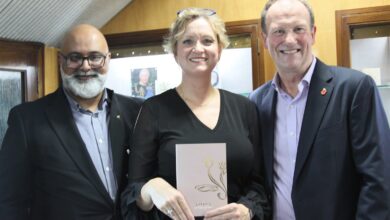How to make the holidays count
Selling tips from Leonard Zell on how to make the holidays count and save you from lost sales

Register to get 1 free article
Reveal the article below by registering for our email newsletter.
Want unlimited access? View Plans
Already have an account? Sign in
If you haven’t had the time, or did not want to make the investment, you could come up on the short end. However it’s never too late. Here are some Zelling tips for the holidays that will make them count and save you from lost sales.
Be in the right place – There is only one place for you to be during the holidays and that is on the sales floor. If you are in the back it will cost you more money then you can imagine, even if you have a manager. Why, you may ask? Because you cannot monitor the floor. Here is a question for you, why is it with as much as 30% of a store’s sales in December, why I seldom find an owner on the sales floor? If you are not there, the following happens…
No one is up front – Salespeople have a habit of wandering to the back of the store because that is where you and your manager are. If you are not there, they will be in the back talking to each other. Customers walking by will see no one up front and what looks like to them like an almost empty store with salespeople who do not care. Why should they come in?
Who will save sales? – If you place yourself where you can observe your salespeople selling, you can stop sales leaking from your store. I have had clients increase their sales as much as 20% by saving sales about to be lost.
Too much jewellery being shown – This happens much too often. Salespeople start showing jewellery as if they are in a grocery store. They bring out one piece after another until they hope their customer says, “I like that one.” If you are not there bad things can happen. An ex-jewellery thief, who I have written about in Jewellery Focus, told me: “Leonard, when I get a salesperson to get three or more pieces of jewellery out I can easily distract and palm one piece. They are never sure if there were two or three out and therefore let it go. The truth is that I can easily get salespeople to show me four are five at a time and make it much easier for me to palm a ring.” This is why you or your manager must be on the sales floor all of the time.
Check your enthusiasm – Yes, yours and everyone else’s. You have read it in my October article and many other times that it is a salesperson’s smile and enthusiasm that motivate your customers to buy. In my 30 years of training I can easily spot the leading salesperson in a jewellery store if they have one with that outgoing personality and a smile, but remember this must start with you, the owner. If you have multiple stores, it still must start with you and then onto your managers. If you and your managers don’t show it then don’t expect much from your salespeople. If you do show your smile and enthusiasm throughout the day, it will be contagious. Your salespeople will be smiling to their customers and closing more sales.
Selling two customers – What happens in most stores when two customers come in? The salespeople like to split them up because they have lost sales when one customer spoke negatively about the jewellery and killed the sale. In fact I have had salespeople tell me they avoid these customers. What they don’t know is that these are the easiest customers to sell and almost always go for add-ons.
This scenario is the result of poor training, or no training at all: the salesperson concentrates on the customer who showed the greatest interest in buying without bringing the other one into the conversation. The one who feels ignored is upset at the salesperson and knocks the jewellery. The best way to stop this is to introduce yourself, remember both of their names and use their names selectively during the sale. The one not buying feels part of the process and helps close that sale and cannot wait for her turn. She is so eager to get one-up on her friend and not to be outdone her friend goes for an add-on. How do I know this? I did this in a jewellery store where the salespeople didn’t believe it could be done. It was so easy that the two women each purchased add-ons.
Let them talk – When I ask salespeople at my seminars, “When you are selling a customer, who talks the most, you or your customer?”, they always reply, “We do.” Then when I ask them, “Who should be talking the most they say, “The customer.” Salespeople are notorious over-talkers and this turns off customers, especially women. It takes practice and discipline to cure this habit. You must be a good listener and to be one you must be easily interruptible. That’s right, the more you let yourself get interrupted the more you allow your customers to talk. To accomplish this always pause between all of your sentences. If it is a long sentence pause one or two times during the sentence. The more you allow your customers to interrupt it speeds up the sale to an easy close.
Get repeat customers – This is the best time to create repeat customers, but who does it? Almost no one. Why, because most salespeople sell anonymously. The most personal they get is when they see their customer’s credit card and say, “Thank you Mr. Smith.” This can create a negative impression because it implies, “Now that I have bought something you are finally addressing me by my name, but won’t tell me yours.” Salespeople who introduce themselves before bringing out the jewellery, remember their customer’s name, and use it selectively during the sale will always outsell others. They can put these customers on a list to call for future occasions. (See my November article on Calling Customers).
Add-on Sales – Those of you who have been reading my articles knew I would be getting to this. The easiest time to create and close add-on sales are during the holidays, but they are seldom tried. This is also true in the US where add-on sales only account for 5% of total sales and my clients tell me it is about the same in the UK. If your salespeople can break the 5% barrier, think of the potential! This is the easiest time to close add-ons because your customers are in a better mood to buy then any other time of the year. Also add-ons are much faster to close than the first sale, so why hurry to the next customer when the odds are better to close add-on sales? If your salespeople don’t attempt add-on sales during December, it is the same as throwing money out the window.
Think of all the diamond sales of £5,000 and more that had no add-on sales. How can any jeweller afford that? When they close the first sale, their customer is in a much better mood to buy then before, but if they have sent that customer out after closing only one sale and in a buying mood they warmed them up to see what another jeweller has. When I tell my students this, they look at me in shocked amazement. They realised this is what they have been doing all along and never knew it. However, here is a big plus. Add-on sales motivate your salespeople to sell more. When I ask them, “When you made an add-on sale how were your sales the rest of the day?” Everyone has answered they closed more sales.
This feature first appeared in the December 2016 issue of Hotel Owner.







